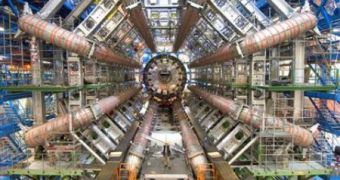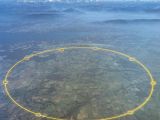The Big Bang is a cosmological model in which the universe has been expanding for around 13.7 billion years, starting from a tremendously dense and hot state, thought to be the best model for the origin and evolution of the universe. But what happened before the Big Bang?
This is a question only one machine built by man is hoped to answer. CERN's Large Hadron Collider will hopefully determine the nature of matter by accelerating protons in the hope of catching a glimpse of the Big Bang, or at least the subatomic particles that are thought to have last been seen at the big event 10 billion to 15 billion years ago that led to the formation of the universe.
The project, called CERN CMS will search for never-before-detected subatomic particles, especially a particle known as Higgs boson, which is a missing piece in the jigsaw puzzle of the theory of particle physics (boson is the name physicists give subatomic particles with particular properties).
It is built below ground level, spanning in at the border of two countries, Switzerland and France. An aerial picture of the area above the actual facility reveals a space large enough to fit a couple of villages. But all the action is going to be underground, in a huge cave drilled by some of the most impressive mining machines in the world.
To get to the caverns where the world's most powerful particle collider is taking shape, you have to take an industrial-issue elevator down just one floor. But that floor is a doozy: it's about 100 meters below ground, roughly as deep as a 30-story building is tall.
Just one of the four major experimental edifices placed around the 17-mile (27-kilometer) ring on the French-Swiss border, is huge on its own. The ATLAS experiment is a seven-story tall cylinder, and in the picture, a man looks somewhat like an ant lost in the landscape.
Unfortunately, scientists will have to wait longer than they expected to look for the answers to decades-old questions about the subatomic world, since the assembly of the collider is taking longer than expected, after a nasty magnet accident as well as other hitches.
But with a bit of luck, the largest particle collider in the world will be operational next spring, when another of the six experiments, ALICE, will start creating miniature Big-Bangs.

 14 DAY TRIAL //
14 DAY TRIAL // 
